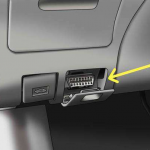If you own a car, then you should know how to make basic repairs and solve a number of issues. This is important so that you can ensure your car always operates fully and you’re not grounded because you’re out of oil, or because you don’t know how to top up your tires.
Not only does this make you more self-reliant and better able to get the most from your car but it can also be highly rewarding and make you feel more capable. That and it’s also important to ensure that your car is running in a fuel-efficient and safe manner at all times.
In this article then, we are going to go over some of the most common, basic car problems that you are likely to encounter and how you can go about solving them yourself. At the same time, we’ll also look at how you can address some more advanced car issues and ultimately completely replace your own mechanic! That will rely on a little device called a VCDS but we’ll get to that in a bit…
Flat Battery
One of the most common issues that you’ll encounter as a driver is a flat batter. This is particularly true if your car is second hand or old as batteries do need to be replaced from time to time. Likewise, it could be down to your alternator. Even in a new car, if you accidentally leave your lights on you’ll end up draining the battery.
So if your car won’t stop because the battery is flat what do you do?
The answer is easy – you use jump leads. You can buy these relatively affordably and you should keep them in your boot at all times. Now what you need to do is to pop open your bonnet and to do the same on another car that has no issue with its battery. Now connect the two batteries using the leads. The two positive terminals should be connected and the negative terminal of the working battery should be connected to a grounding point in the drained car (any exposed metal under the hood). Now start the engine on the working car and leave it to run for a bit. After a couple of minutes, start the engine on the other car. Make sure you go for a bit of drive before you turn off the engine, as driving the car is what allows the alternator to charge the battery further – so far you’ve only taken enough juice to start up.
Oil Leak
Another common issue is an oil leak and this can be a little trickier to solve. The problem is usually finding the leak and where it is coming from.
One way to solve this issue is to add a tiny bit of fluorescent leak detection fluid into the oil. Now if you shine a fluorescent light, you’ll be able to trace it back to the source. You can also do something similar by using talcum powder and sprinkling it around the inside of the bonnet – it should stick to the oil and collect around the source of the leak.
Now you just need to seal the leak. Often this is a matter of replacing the gasket which should keep joints air tight. If it’s not that, it might be the oil line or the oil pan. You can sometimes use silicone tape though if the leak is in the oil line which will hold for some time. Stop leak additive can also be used to soften and condition gaskets while you wait to replace them.
Flat Tires
To replace your tire, you need to first put your car in park or reverse to stop it rolling. Engage the handbrake and then take the jack to secure the car in place – don’t lift it yet (the jack should be in the boot, perhaps underneath the fabric bottom).
Now take your wrench and use it to loosen the lug nuts on the tire. This can be a lot of effort, so you may even need to stamp. Turn counter-clockwise. Loosen then but don’t remove them.
Now lift the car up the rest of the way with the jack and then remove the lug nuts. You should now be able to slip on the new tire and tighten the nuts by hand. Lower the vehicle and then tighten further using the wrench.
Diagnosing and Solving More Complex Issues
But what if the check engine light is on? How can you solve that yourself?
Actually, it’s easier than you think. All you need to do is to invest in a relatively affordable device called a VCDS. This stands for VAG COM Diagnostics System and is a commercial product that is very similar to the diagnostics tools used by professional mechanics.
You then need to install some software on your computer and pair it with the Bluetooth device that can with the pack.
Simply plug the VCDS into your car’s OBD-II connector port (consult your car owner’s manual if you’re not sure where to find this) and the system will run a full diagnostics report and relay that back to your computer. The software will then use this information to learn precisely what’s going on inside your vehicle and will talk you through how to fix it yourself. This way you can solve any problem yourself without ever going into a garage!



